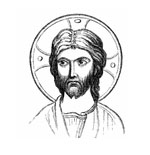
A “Deeper Understanding” of the Priesthood?
NEW OXFORD NOTEBOOK
The priesthood is in crisis, and everybody knows it. Numbers tell the tale. Per the Official Catholic Directory, there were 37,302 priests (diocesan and religious order) and 4,856 seminarians in the U.S. in 2018. Compare that to 1965, the year Vatican II concluded, when there were 58,632 priests and 48,992 seminarians. No, the last figure is not a typo. There has, in fact, been a 90 percent decrease in the number of seminarians in that time span, as well as a 36 percent decrease in the number of priests.
But not everybody agrees on why the priesthood is in crisis — or what should be done about it.
The sex-abuse scandal has played a definitive role; nobody doubts this. The cause of the scandal, however, is still being debated. The looney fringe rants about coordinated infiltration by wily commies or wicked Masons. Pope Francis has suggested that its root is “clericalism.” Even Pope Emeritus Benedict XVI emerged from the shadows for a brief moment this spring to blame the sexual revolution and the collapse of moral theology in the 1960s. I’ve argued in these pages that self-protective networks of homosexual clerics — a.k.a. the Lavender Mafia — created a culture that allowed sexual depravity to fester and grow, like a cancer in the Body of Christ (“Father Figuring,” Jul.-Aug.).
The theories are manifold. One of the more intriguing was put forth recently by Fr. Dwight Longenecker, who said the priesthood is suffering a “crisis of forgetting.” Longenecker, himself a Catholic priest (and a convert from Anglicanism), tweeted: “There is a crisis in the priesthood because everybody has forgotten what a priest is. He is not a counselor, a social worker, an agony aunt, a paper pusher, a youth worker, or therapist. He offers a sacrifice to reconcile God and Man, banish Satan, forgive sins and heal the sick” (March 29).
The good Father is on to something. A familiar argument in the pre-scandal days, when the crisis was more of a mystery, was that young men aren’t drawn to the modern priesthood because it looks a lot like the ecclesial equivalent of a franchise manager. What does attract young men to the priesthood is its heroic, sacrificial character. But as modern theology came to consider the Mass not so much a Holy Sacrifice as a memorial meal, the priest came to be known as a presider. And the image he projects from the altar is, by and large, of one who has delegated all but his most essential duties, basically emceeing the proceedings as a gaggle of laywomen flits about the sanctuary. Nope, none too appealing.
You May Also Enjoy
How are we to heal society and the church of negative “masculine” qualities, if not through the love of Christ which comes in the sacraments and prayer?
Abortion rates are sky high. Birth rates are at rock bottom. Americans are rejecting parenthood on a scale not seen before. What does this mean for our nation's future?
Somewhere in the mid-1960s or early 1970s the women’s movement in this country took a…

